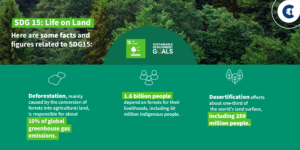Climate tech is defined as technologies that are explicitly focused on reducing CO2 emissions, or addressing the impacts of global warming.
In recent years, the term “tech” has become a common suffix used to describe technology applied to solve problems in various domains. We have FinTech for finance, FoodTech for food-related solutions, and ClimateTech for addressing climate challenges. However, the scope of climate-related issues is even broader than those of finance or food.
Classifying Climate Problems
When discussing climate problems, it is often challenging to narrow down the focus due to their diverse nature. Climate issues can encompass global warming, greenhouse gas emissions, biodiversity loss, ocean plastic pollution, ozone layer depletion, and many other environmental concerns. To simplify the classification of climate-related problems, we can categorize them into three scopes: measurement, prevention, and healing or fixing.
The measurement scope aims at detecting, understanding and quantifying the problem or how much something contributes to worsen or improve it. Within this scope, numerous solutions can address these issues, such as tools for measuring carbon emissions, methodologies, standards, and monitoring tools to assess carbon dioxide removal or avoidance, satellite image analysis for deforestation analysis, and IoT devices for real-time electricity consumption/generation measurement and analysis.
Once we have a clear understanding of the problem, we can apply climate technology to prevent it from occurring or minimize its negative impact. This falls within the prevention scope. Solutions in this realm may involve optimizing technologies to reduce greenhouse gas emissions such as:
-Delivery route optimizations,
-Leak detection and self-healing systems,
-Fire prevention and early reaction mechanisms,
-Replacing plastic containers with biodegradable alternatives
-Transitioning from fossil fuels to clean energy sources
The Human Predicament
Unfortunately, as part of our human condition or societal norms, we often tend to react to problems only after they have already occurred. This is particularly true in the context of climate issues. We typically respond when we have already caused damage, hoping it is not irreparable. Currently, our atmosphere has an excess of gigatonnes of CO2, our oceans are contaminated with millions of tons of plastic, we have lost one-third of the planet’s forests, and thousands of species have become extinct or endangered. Technologies falling under the healing or fixing scope aim to repair some of the damage already done.
Examples include capturing CO2 from the air or sea for utilization or storage, cleaning plastic from oceans, employing reproduction and reintroduction techniques to help endangered species recover lost environments, and engaging in reforestation efforts or transitioning land use from intensive agriculture or livestock to forests or agroforestry.
Driving Global Impact: Our Mission
At ClimateTrade, we are actively applying climate technology across all three scopes. While our journey initially focused on the urgent problem of global warming and climate change, we have now expanded our efforts to include renewable energies, biodiversity preservation, and plastic pollution, among other areas.
Our mission is to generate large-scale positive impact for our planet. To achieve this, we aim to empower individuals and organizations worldwide by enabling them to prevent, heal, and take climate action regardless of their size or technical capabilities.
Within the measurement scope, we have developed carbon footprint calculators that users can freely access to understand the impact of their company’s activities, lifestyle choices, or recent holidays. For companies seeking a deeper understanding of their footprint, our prime calculator offers more accurate and granular data for better action planning and reporting. It also allows users to calculate the footprint of specific activities, such as events. Additionally, companies can inform their customers about the carbon footprint of their products using our API, seamlessly embedding climate action in every product or service they offer.
However, our work within the measurement scope is not limited to carbon footprint calculations. We have collaborated with partners to develop the first biodiversity standard, establishing a framework for projects to understand how they can protect and preserve biodiversity.
Within the prevention and healing scope, we have created a marketplace where project developers, those on the front lines working on projects to prevent or address various issues like carbon emissions, plastic pollution, or biodiversity loss, can access open and transparent channels for funding. This enables them to scale their activities that generate positive impact for our planet using reliable mechanisms such as carbon credits, biodiversity credits, renewable energy certificates, or direct contributions.
Harnessing the Power of Blockchain
Through our API, built on blockchain technology with a focus on traceability and transparency, we provide companies with the tools to incorporate climate action into their product or service offerings. This allows them to offset the emissions generated by their products or provide climate-positive services.
We continue to innovate and leverage climate technology to measure, prevent, and heal the damage caused by climate issues. However, our API aims to provide an ecosystem of tools that other companies and individuals can use to develop new solutions and tools. We firmly believe that addressing a global problem requires a global response and a collective solution.

- SEO Powered Content & PR Distribution. Get Amplified Today.
- EVM Finance. Unified Interface for Decentralized Finance. Access Here.
- Quantum Media Group. IR/PR Amplified. Access Here.
- PlatoAiStream. Web3 Data Intelligence. Knowledge Amplified. Access Here.
- Source: https://climatetrade.com/what-is-climate-tech-and-how-is-it-tackling-global-co2-emissions/
- :has
- :is
- :not
- :where
- a
- About
- access
- accurate
- Achieve
- across
- Action
- actively
- activities
- Additionally
- address
- addressing
- After
- agriculture
- aim
- aims
- AIR
- All
- allows
- already
- also
- among
- an
- analysis
- and
- api
- applied
- Apply
- Applying
- ARE
- areas
- AS
- assess
- At
- Atmosphere
- banner
- become
- believe
- Better
- blockchain
- blockchain technology
- broader
- built
- by
- calculate
- CAN
- capabilities
- Capturing
- carbon
- carbon credits
- carbon dioxide
- carbon emissions
- carbon footprint
- caused
- certificates
- challenges
- challenging
- change
- channels
- choices
- classification
- clean energy
- Cleaning
- clear
- Climate
- climate action
- Climate change
- co2
- co2 emissions
- collaborated
- Collective
- Common
- Companies
- Company’s
- Concerns
- condition
- Containers
- context
- continue
- contributions
- created
- Credits
- Currently
- Customers
- damage
- data
- deeper
- defined
- deforestation
- describe
- Detection
- develop
- developed
- developers
- Devices
- direct
- discussing
- diverse
- domains
- done
- down
- due
- Early
- ecosystem
- efforts
- electricity
- embedding
- Emissions
- empower
- enables
- enabling
- encompass
- energy
- engaging
- environmental
- environmental concerns
- environments
- establishing
- Even
- events
- Every
- excess
- expanded
- Falling
- Falls
- finance
- fintech
- firmly
- First
- Focus
- focused
- food
- Footprint
- For
- fossil
- fossil fuels
- Framework
- from
- front
- fuels
- funding
- GAS
- generate
- generated
- Global
- global response
- global warming
- greenhouse gas
- Greenhouse gas emissions
- Have
- healing
- help
- holidays
- hoping
- How
- However
- HTTPS
- human
- image
- image analysis
- Impact
- Impacts
- improve
- in
- include
- incorporate
- individuals
- inform
- initially
- innovate
- into
- involve
- iot
- iot devices
- issues
- IT
- ITS
- journey
- Land
- large-scale
- layer
- Leverage
- lifestyle
- like
- Limited
- lines
- loss
- lost
- many
- marketplace
- max-width
- May..
- measure
- measurement
- measuring
- mechanisms
- methodologies
- millions
- Mission
- monitoring
- more
- much
- Nature
- negative
- New
- new solutions
- now
- numerous
- occurred
- occurring
- ocean
- oceans
- of
- offer
- Offerings
- Offers
- offset
- often
- on
- One-third
- only
- open
- optimizing
- or
- organizations
- Other
- our
- part
- particularly
- partners
- planet
- planning
- plastic
- plato
- Plato Data Intelligence
- PlatoData
- Pollution
- positive
- power
- preservation
- prevent
- Prevention
- Prime
- Problem
- problems
- Product
- Products
- project
- projects
- protect
- provide
- React
- reaction
- real-time
- realm
- recent
- Recover
- reduce
- reducing
- Regardless
- reliable
- removal
- Renewable
- renewable energy
- repair
- Reporting
- reproduction
- requires
- Respond
- response
- Route
- satellite
- Scale
- scope
- SEA
- seamlessly
- seeking
- service
- Services
- simplify
- Size
- societal
- solution
- Solutions
- SOLVE
- some
- something
- specific
- standard
- standards
- storage
- such
- Systems
- Take
- tech
- Technical
- techniques
- Technologies
- Technology
- term
- than
- that
- The
- their
- Them
- These
- they
- this
- those
- thousands
- three
- to
- tons
- tools
- Traceability
- transitioning
- Transparency
- transparent
- true
- typically
- under
- understand
- understanding
- urgent
- use
- used
- users
- using
- various
- we
- What
- What is
- when
- while
- with
- within
- Work
- working
- worldwide
- worsen
- years
- zephyrnet












